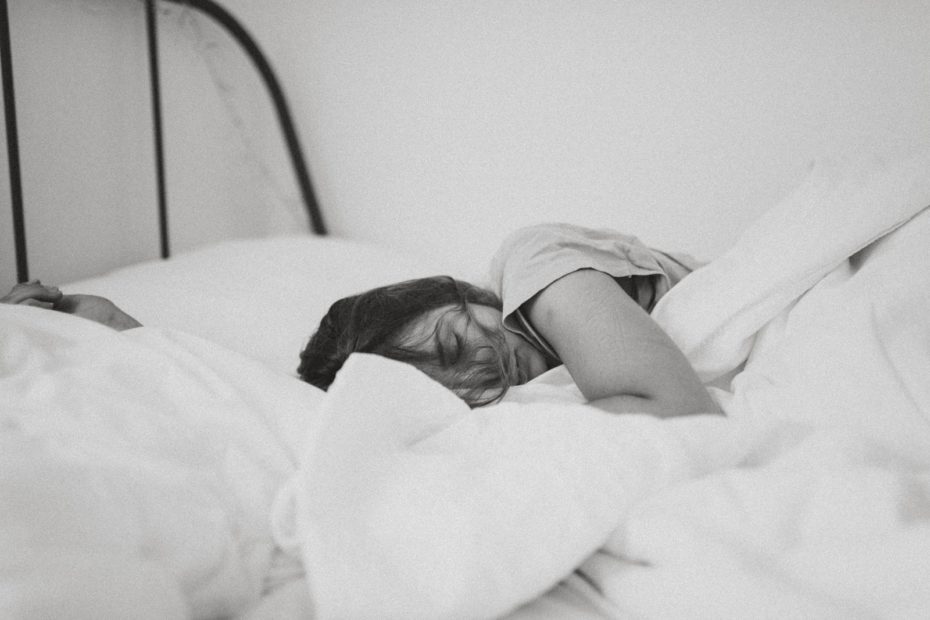
Photo by Kinga Cichewicz on Unsplash.
Oxygen, water, food, and sleep. These are four essentials to life. Without them peoples’ health suffers. Sleep is an important factor that heavily influences our performance at work, our risk for chronic disease, and our overall quality of life. Sleep researchers, however, aren’t clear on the exact reason why humans even need to sleep. From an evolutionary perspective sleep would certainly have left primitive humans vulnerable to attack so it must offer some great advantage.
Generally speaking, sleep is thought to allow our brains and our bodies to heal and repair from the damage of the day; synaptic plasticity is managed, brain pathways that are not being used are pruned, muscles are repaired, and energy stores are replenished.
America is Tired
Short sleep duration (defined as less than 7 hours of sleep per night) is common. In the United States 24% – 48% of people report it. If you are obese, a smoker, consume excessive alcohol, or are physically inactive you are more likely to report short sleep duration (1). Sleep is thought to be an active process. In other words, you don’t fall asleep simply because your brain is tired. Our brain cycles through sleep stages during the night and brain activity is only slightly reduced. Sleep is thereby actively maintained throughout the night. Disruption of this careful balance between arousal and sleep results in disturbed sleep.
Circadian Rhythm is Important
Humans display a 24-hour circadian rhythm. This rhythm is endogenous meaning it is maintained even in the absence of environmental cues. Human beings placed in environments with no light, no time cues, no social cues, etc., will still display a 24-hour rhythm. However, external timing cues do modulate and adapt the rhythm to the environment.
For example, sunlight, in humans, is a powerful cue to have the waking phase of our 24-hour cycle during the day. Other mammals, like rats and mice, have most of their waking phase at night. These rhythms were created through many years of evolutionary pressure. Light cues, including input from the blue light emitted from screens and some light bulbs, modulate our circadian rhythm and are extremely powerful. Circadian rhythm is endogenous so an internal pacemaker is necessary. The major part of the brain that acts as the internal pacemaker of humans is connected to the retina (2). This direct and powerful connection shows just how important light is for controlling circadian rhythm.
Stages of Sleep
Sleep is divided into REM (rapid eye movement) and non-REM. Non-REM sleep is further subdivided into 4 stages, each with its own properties. During non-REM sleep neuronal activity is low, metabolic rate and brain temperature are at their lowest, heart rate decreases, blood pressure lowers, and muscle tone and reflexes are intact. Contrast this with REM sleep where brain activity is similar to that of the awake brain. For this reason, it is sometimes referred to as paradoxical sleep. In REM sleep brain temperature and metabolic rate rise and there is complete loss of muscle tone with the exception of the diaphragm (so you can breathe), the eye muscles, and some muscles within the inner ear.
Sleep and Aging
Perhaps you’ve noticed that the older you get, the worse you may sleep. It’s in fact normal for sleep to become disrupted as one ages; older adults don’t sleep as well as younger adults. The reason for this can be explained by a decreased ability to initiate and maintain sleep after age 50 (3). Sleep architecture begins to change:
- Earlier bedtimes and rise times
- More time taken to fall asleep
- Shorter sleep duration
- Less consolidated sleep with more awakenings, arousals, or transitions to lighter sleep stages
- More easily woken up
- Reduced amount of non-REM sleep
- Increased time spent awake during the night
Hopefully you are one of the few that has no trouble sleeping as an older adult, but for the majority of us our sleep will slowly begin to change as we age.
Questions
If you’re curious about how your exercise, diet and lifestyle is affecting your sleep, reach out to our team. Call us at 515-421-4018 or schedule online.
(Adapted from The Chiropractic Success Academy)
References
- https://www.cdc.gov/sleep/data_statistics.html
- Kandel, et al., editors. “Sleep and Dreaming .” Principles of Neural Science, 4th ed., McGraw-Hill, 2000, pp. 936–947.
- Mander, B. A., Winer, J. R., & Walker, M. P. (2017). Sleep and Human Aging. Neuron, 94(1), 19–36. https://doi.org/10.1016/j.neuron.2017.02.004
Share this Post

